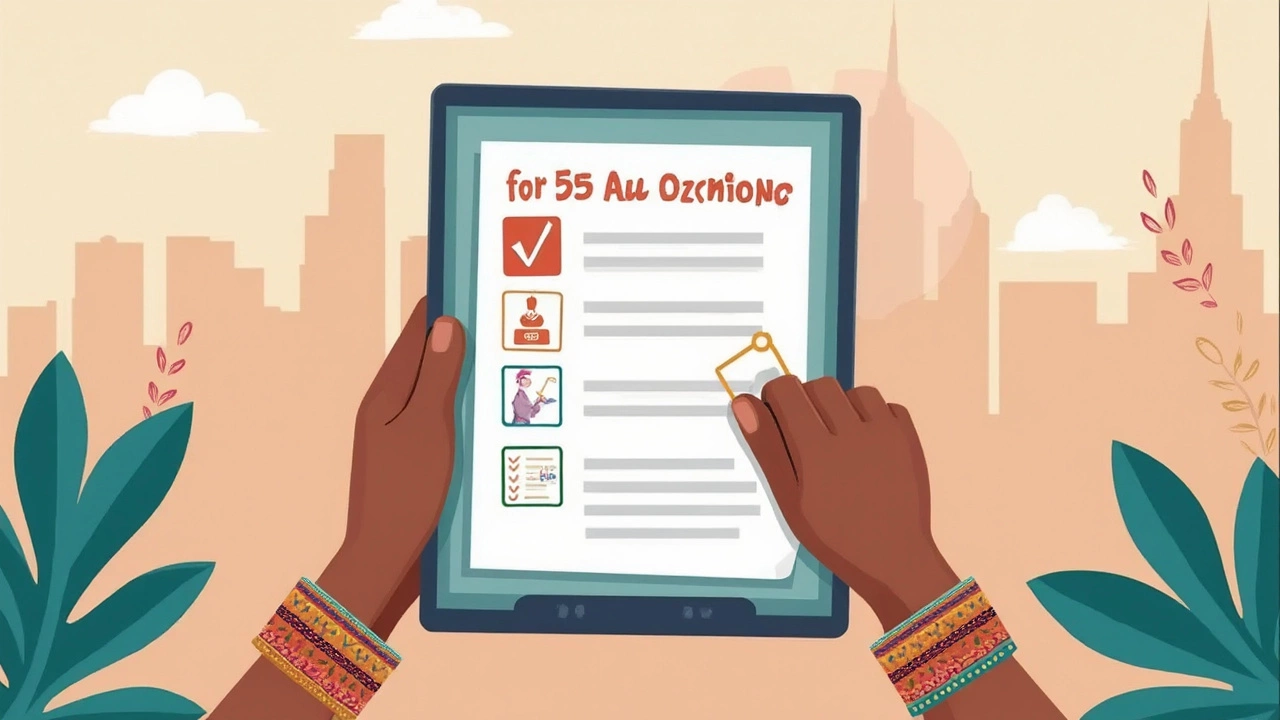-
29

How to Get Ozempic for $25 a Month: Affordable Weight Loss and Diabetes Medication in Australia
Did you know that the price of Ozempic can swing from $30 to over $200 a month in Australia? Wild, right? Yet, every day, thousands are scrambling to get this prescription medication for something close to pocket change. If you’ve been hearing about people on TikTok bragging about their $25 Ozempic refills and wondering if there’s a trick, you’re not alone. Australia has its own quirks when it comes to meds, so finding the best deal isn’t always straightforward. My inbox lately is full of “How do I get Ozempic for $25 a month?” questions, so let’s ditch the guesswork and break it down once and for all.
What is Ozempic, and Why Are People So Obsessed?
Ozempic isn’t a fad; it’s a real, prescription-only medication, technically called semaglutide. Originally designed to help people with type 2 diabetes control their blood sugar, it’s gotten famous because it also helps with weight loss—sometimes dramatic weight loss. Look around in the chemist’s fridge and there’s often a rush for the last box. The buzz? People who had run out of hope with dieting finally dropping kilos—sometimes 10kg, 15kg, or more in a year.
But there’s a catch: for non-diabetics, it isn’t just freely handed out. You need a valid prescription, usually from your GP or a specialist, and unless you fit strict criteria, you can’t get it subsidised under the PBS (Pharmaceutical Benefits Scheme) for just weight loss in Australia. For folks with type 2 diabetes who meet PBS rules (i.e., failed first-line medications like metformin, and needing ongoing glucose control), you could score that much-talked-about $30/month pharmacy price. Pay attention—quite a few people who need it for diabetes still miss out because their scripts aren’t worded right. The actual PBS price as of June 2025 is $31.60 for general patients and $7.70 if you have a concession card. Everyone else? Get ready to pay between $130 and $180 for a month’s supply, sometimes more if demand is high.
Pharmacists often keep a list of who gets the next available dose when it comes in. Go ask your local one—there’s a good chance you’ll be told, “Sorry mate, it’s out of stock.” The wild demand isn’t just local. In 2024, data from the Therapeutic Goods Administration showed a 200% spike in Ozempic dispensing. There’s even a black market, but trust me—don’t go there. Counterfeit Ozempic is a thing, and people have landed in the hospital from fake vials.
Who Qualifies for the $25 Ozempic Trick?
Let’s clear up the $25 number right here: the lowest legit monthly price, unless you’re on a health concession card, will be that PBS copayment—it’s never exactly $25, but sometimes with pharmacy discounts and loyalty points you’ll see your out-of-pocket cost barely over that threshold. PBS (Pharmaceutical Benefits Scheme) is Australia’s way of making certain meds affordable, but with strict rules—too strict for many. You must have uncontrolled type 2 diabetes, be over 18, and have already tried two other diabetes drugs. Your GP or endocrinologist needs to write ‘Authority PBS Script’ and jump through hoops for Medicare to approve it. They fax details (yes, fax, it’s still the 90s here), and if the paperwork aligns, the magic price appears at the till.
What about weight loss? Here’s the honest deal: using Ozempic just to lose weight (no diabetes) is still off-label in Australia and not covered by the PBS. Sure, you may see clinics promising “medical weight management,” but you’ll pay the private price, usually $130–$200 per pen for a month’s dose. There are trials going on for a new version of semaglutide called Wegovy, which might get PBS coverage for weight loss in the future, but don’t count on it this year.
So, unless you have diabetes that qualifies, or a generous pharmacist with a markdown day, the $25 myth is really about those who tick the PBS boxes. If you get social benefits or a health care card, the price drops to $7.70/month—yep, that cheap. Otherwise, regular folks pay the general PBS price, and everyone else coughs up full retail. Not fair, but that’s the current rulebook.

Step-by-Step Guide to Scoring Ozempic at the Lowest Possible Cost
Alright, if you’re set on chasing that Ozempic deal, here’s the no-nonsense roadmap. Be honest with your GP—don’t fake medical stuff; that’s dodgy, and they’re used to people trying. Here’s how you might pay $25–$35 per month, completely above board, if you qualify for the PBS price:
- Book a GP appointment: Discuss your diabetes history, what meds you’ve tried, where things haven’t worked. Bring blood test results (HbA1c especially) and a meds list.
- Get the right script: The GP must write an authority PBS script for Ozempic (semaglutide) 1mg injection. This involves a Medicare application—expect a longer consult.
- Authority approval: Your doctor faxes details to the PBS Authority. This usually clears in a day or two.
- Head to the pharmacy: Hand in your script. They’ll check if you’re PBS-eligible and if stock exists. Join the waitlist if you’re out of luck.
- Check for discounts: Some chemists run “price match” or loyalty points offers, especially bigger chains. Swipe your frequent shopper card.
- Concession card?
- If you have a Pensioner or Concession card, PBS drops the price to under $8. No, you can’t fudge this—they check ID.
For the rest, unless you’re privately insured and can claim part of the cost (very rare for Ozempic), try pharmacies in less busy suburbs or regional areas—urban shortages can drive prices up. Some savvy folks call around dozens of chemists; I know a bloke who rang 23 places in western Sydney before snagging his script without a two-week wait.
What If You Don't Qualify? Are There Legit Alternatives?
It’s frustrating if you don’t fit the diabetes criteria, especially hearing stories of dramatic transformations on Ozempic. But there are options. Some GPs prescribe compounded semaglutide made in local compounding pharmacies. Word of warning: while it’s technically legal if compounded for you, the TGA and Diabetes Australia have raised red flags about inconsistent doses and possible contamination risks. The price? Usually around $200/month, sometimes less, but you’re rolling the dice on safety and effectiveness.
Other legit medications out there for weight loss include Saxenda (liraglutide), also an injectable, but with a slightly weaker track record for weight loss, and Duromine (phentermine), an old-school appetite suppressant. Saxenda is about $350/month and only rarely subsidised, while Duromine can go for $80–$150/month. None stick the landing quite like semaglutide, but they’re better regulated than mystery vials online.
Some people try to import Ozempic or Wegovy from overseas online pharmacies. Yes, you can technically bring in a three-month supply with a prescription under Australia’s personal importation scheme, but border control gets twitchy with temperature-sensitive drugs. Miss a delivery and you risk ruined meds, or worse, counterfeit product. Always check the TGA’s official site for safe import advice, and stick with registered overseas pharmacies if you go this way.

Extra Tips for Saving Money and Staying Safe
Here’s where you get cheeky, but stay legal. First off, build a real relationship with your GP or endocrinologist. They’re more likely to go to bat for you with the PBS if they know your history inside out. Keep your diabetes tests up to date, and bring everything in at your appointment; makes the paperwork easier.
If you do qualify, ask about three-month scripts so you’re not scrambling every month—Ozempic shortages are real, so having repeat authority can help. If your chemist is reliable, see if they’ll hold stock for you. Some smaller pharmacies don’t have a waitlist and may get restocks before the big chains—worth asking around.
If paying retail, use pharmacy comparison sites like Chemist Warehouse, Priceline, or local indie chemists. A quick price comparison can save you $20 or more in a blink. Some insurance extras will reimburse part of the cost—check your cover, even if it’s not obvious. If you’re desperate, ask your GP about joining clinical trials for weight loss meds (there’s usually a multi-month waiting list, but free drugs while enrolled is a perk).
- Don’t buy Ozempic on Facebook groups or unregulated sites—fake and stolen pens are a growing problem.
- Transport and store pens correctly—heat or freezing ruins the drug.
- Report any side-effects right away—Ozempic isn’t for everyone, and side-effects are real. The most common are nausea, diarrhoea, and headaches.
- Stay on top of your tests—blood tests (like HbA1c) and check-ups will be part of ongoing scripts.
| Medication | Monthly Cost (Approx.) | PBS Eligible? | Notable Side Effects |
|---|---|---|---|
| Ozempic | $31.60 or $7.70 (PBS); $130–$200 (private) | Yes, for type 2 diabetes | Nausea, GI upset |
| Saxenda | $350 | No (rare exceptions) | Nausea, injection site reactions |
| Duromine | $80–$150 | No | Insomnia, dry mouth, raised blood pressure |
So, bottom line: That “Ozempic for $25/month” price isn’t magic, but it’s possible if you tick all the right boxes for the PBS and play your cards right at the chemist. For everyone else, watch this space—Wegovy and new weight-loss drugs are on the way, and hopefully, the rules will shift with the public demand. If you’re stuck in the full-price zone, compare, shop local, and talk to your GP about all the options, not just Ozempic.